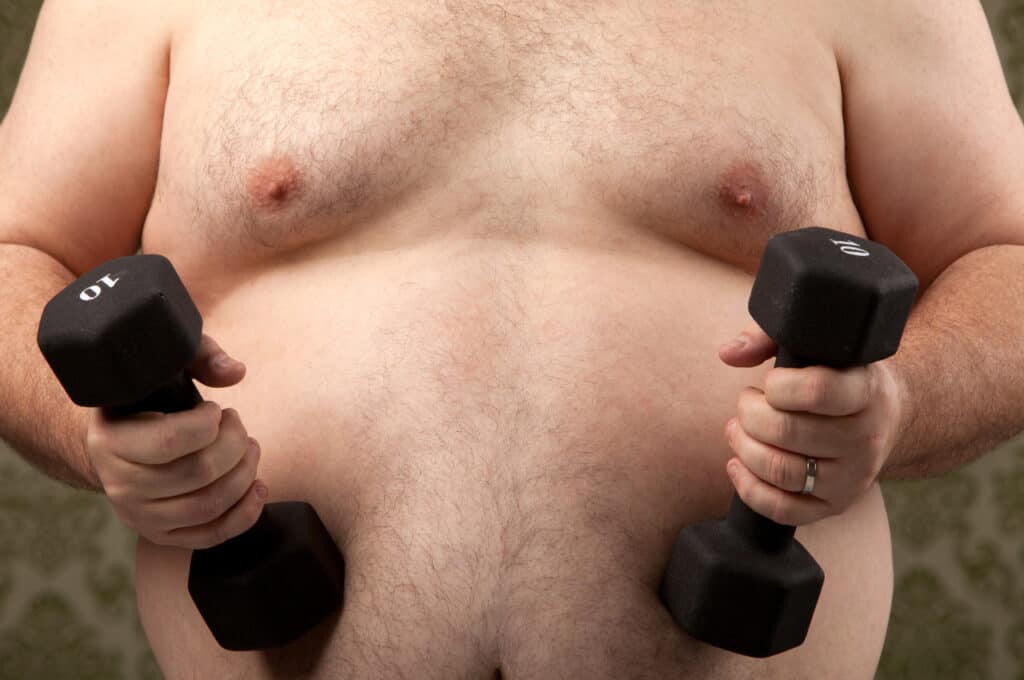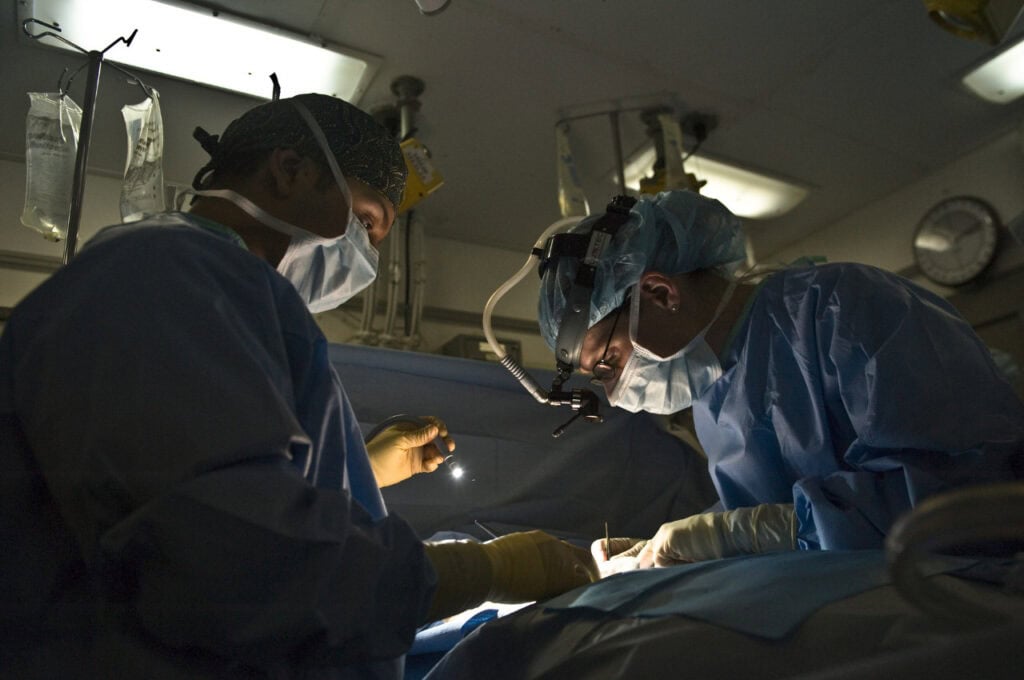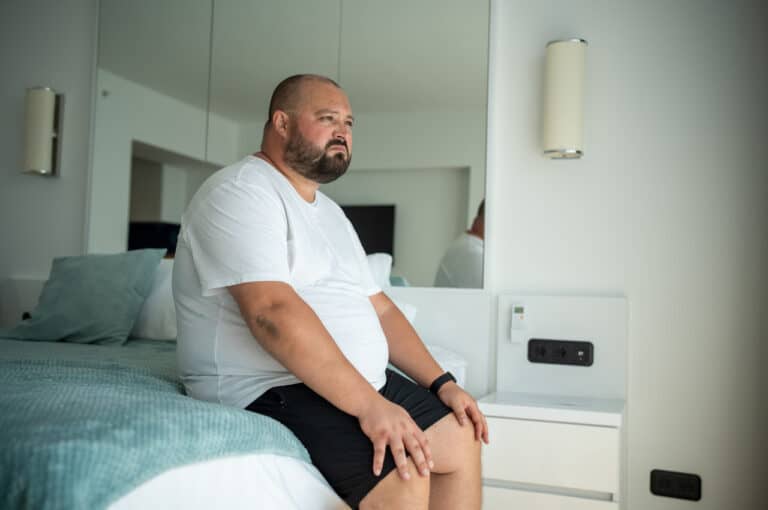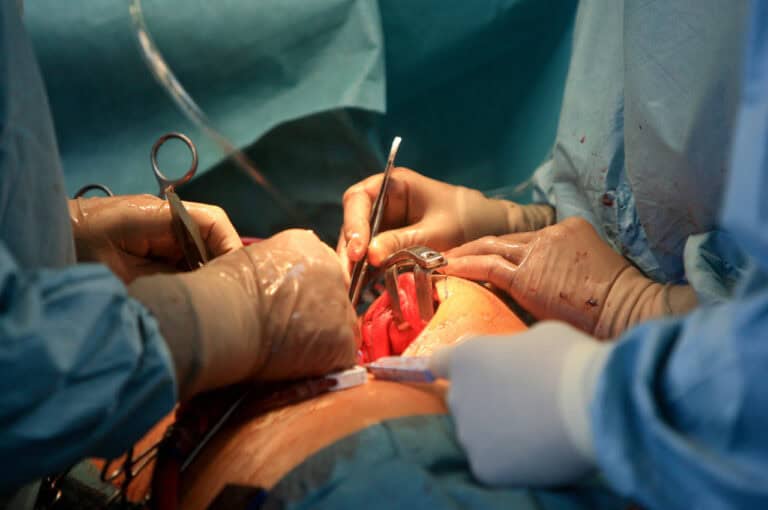Gynecomastia and weight concerns can be a source of discomfort for many men, affecting both self-esteem and everyday life. If you have noticed pointed swelling or a persistent fullness in your chest, you might wonder whether extra body weight is truly the cause or if something else is happening.
At the Gynecomastia Center of Boston, we have guided countless patients through understanding this connection and choosing the right path forward. Our goal is to help you explore the relationship between gynecomastia and being overweight, so you can make empowered decisions about your body. Let’s look closer at what you need to know about this important topic.
Key Takeaways
- Major overlap: Gynecomastia and overweight frequently appear together, but they involve different types of tissue.
- Hormonal root: Hormonal shifts caused by body fat often play a central role in true gynecomastia development.
- Not just fat: Gynecomastia involves a hard glandular component, while pseudogynecomastia is mainly fatty tissue.
- Diagnosis matters: A physical exam and medical history are essential to determine the true cause of chest fullness.
- Treatment options: Addressing gynecomastia may involve surgery, weight loss, or targeted hormone management.
- Lasting solutions: True gynecomastia will not fully resolve with weight loss alone.
- Customized care: The best approach requires looking at your individual health, goals, and lifestyle.

Understanding Gynecomastia and Overweight
If you notice chest swelling, it is natural to assume that extra weight alone is the cause. The relationship, however, is more nuanced than simple fat accumulation.
Gynecomastia refers to the benign enlargement of the male breast gland. While being overweight often leads to an increase in chest fat, gynecomastia specifically involves growth of the glandular tissue beneath the nipple. This means you can be slim and still develop gynecomastia, or be overweight and not have true glandular growth.
Hormonal changes, certain medications, medical conditions, and genetics all contribute to gynecomastia. Being overweight can amplify or trigger these issues for some men, but fat and gland are not the same, nor do they respond in the same way to weight loss efforts.
How Excess Weight Influences Male Chest Appearance
Many patients come to us in Boston wondering if losing weight will “flatten” their chest. The answer depends on what type of tissue is causing the fullness.
Excess body weight often leads to the buildup of soft, movable fat over the pectoral muscles. This fatty tissue responds to a calorie deficit, exercise, and lifestyle changes. However, true gynecomastia includes a firmer, fibrous mass that persists even as overall body fat drops.
When you gain weight, your abdominal area, thighs, and chest can all become storage sites for excess fat. Men who carry more of their fat tissue in the chest may find it especially challenging to achieve a flat, contoured look without targeted interventions beyond just weight loss.
The Difference Between Gynecomastia and Pseudogynecomastia
Distinguishing between gynecomastia and simple chest fat is critical for effective treatment. The difference comes down to which tissue is present.
If you have glandular enlargement, the tissue feels firm, rubbery, and may be sensitive to the touch. This is true gynecomastia, a growth of the breast gland that usually sits directly under the nipple and areola region.
In pseudogynecomastia, the swelling consists mainly of fat, often soft and more diffuse across the chest. Diet and exercise are most effective in improving this form. However, even with a leaner physique, persistent glandular tissue can remain.
Our surgeon at the Gynecomastia Center of Boston performs detailed physical exams and, if needed, may recommend imaging tests to clarify the underlying tissues involved.
Signs You Are Dealing With True Gynecomastia
Recognizing whether your chest fullness is due to gynecomastia or just fatty deposits matters for developing your treatment plan. Consider these markers:
- Nipple area has a firmer, disc-shaped lump beneath it.
- Tenderness or mild discomfort when pressing on the tissue.
- Persistence of the fullness despite ongoing weight loss.
- Noticeable enlargement that affects one side or both sides of the chest.
If you detect these signs, it is a good idea to arrange a medical evaluation. Proper diagnosis sets the stage for effective solutions.
Why Being Overweight Raises the Risk of Gynecomastia
Weight gain affects hormone balance and metabolism in multiple ways, some of which can directly promote gynecomastia.
Body fat, especially in the abdominal region, contains an enzyme called aromatase. This enzyme converts testosterone, the primary male sex hormone, into estrogen, a hormone usually produced in higher amounts in women.
As you accumulate more body fat, more testosterone converts to estrogen. Higher estrogen levels stimulate glandular tissue growth in the breast area, sometimes resulting in gynecomastia that does not resolve with simple weight loss.
Medications prescribed for high blood pressure, heart problems, or depression can also interact with excess weight to alter hormone levels. Medical conditions such as liver dysfunction or endocrine disorders further raise your risk if you are overweight.
Main Causes and Contributing Factors
Multiple factors can influence both weight gain and the development of gynecomastia. Understanding these influences will help you identify the main sources of concern.
As you explore the connection between being overweight and gynecomastia, keep in mind these common contributors:
- Hormonal imbalance: Increased body fat boosts estrogen levels through aromatase activity, encouraging glandular growth.
- Genetics: Some men inherit a tendency to accumulate glandular tissue, regardless of their weight.
- Medication use: Certain drugs (such as anti-androgens, anabolic steroids, or medication for ulcers) can drive breast tissue development, especially in the presence of higher body fat.
- Medical conditions: Conditions affecting the liver, thyroid, or kidneys may mix with weight problems to disrupt hormone balance.
- Aging: Testosterone production declines with age, leaving the body more vulnerable to hormonal fluctuations seen in overweight men.
These factors often overlap, making individualized assessment and treatment essential for long-term results.
How Weight Loss Affects Gynecomastia
Weight loss is generally beneficial for overall health, but it may only partially improve chest contour in men with true gynecomastia. Burning excess fat can reduce the soft, fatty component overlying the chest muscles. You might notice some flattening and firmness as a result.
However, the core glandular tissue that defines gynecomastia tends not to shrink in the same way as fat. No matter how diligently you diet or exercise, a rubbery disc or persistent mass beneath the nipple can remain. These limitations mean that addressing the underlying breast tissue directly is often necessary to achieve your desired shape.
Men who achieve significant weight loss sometimes notice that remaining glandular tissue becomes even more pronounced, because it is no longer hidden by the surrounding fat.
Diagnostic Approach
Determining whether excess chest fullness is fat, gland, or a combination is a critical first step. At our practice, diagnosis begins with a careful review of your health history and a focused physical exam.
We assess the characteristics of the tissue, check for symmetry, and ask about onset, pain, and any related symptoms. In some cases, we recommend imaging tests such as ultrasound or mammography to differentiate dense gland from fatty deposits.
Blood tests may be used to screen for underlying hormonal issues, especially if the enlargement developed rapidly or is accompanied by other symptoms. Only after a thorough workup can we recommend a treatment plan that targets your specific cause.
Non-Surgical Management
For men whose chest swelling is mainly due to excess fat, nonsurgical management can provide significant improvements. Adopting a comprehensive plan will help you see better results.
Patients who primarily struggle with pseudogynecomastia or wish to avoid surgery can see improvements through these steps:
- Weight loss: Achieving and maintaining a healthy weight may dramatically reduce the fatty content of the chest.
- Exercise: Focusing on cardiovascular fitness and strength training helps both burn fat and sculpt the underlying pectoral muscles.
- Diet: Consuming fewer processed foods and simple sugars while increasing lean protein supports muscle development and fat loss.
- Medication optimization: Reviewing your current medication list with your primary care physician could eliminate drugs that contribute to gynecomastia.
While these noninvasive strategies can help many men, persistent or significant glandular tissue usually requires surgical intervention to achieve a truly masculine chest shape.
Surgical Solutions for Persistent Gynecomastia
If you have already achieved substantial weight loss or if you have true gynecomastia that does not respond to lifestyle changes, surgery may be the best approach. At the Gynecomastia Center of Boston, we offer proven solutions customized to each patient’s needs.
Gynecomastia surgery involves removing excess glandular tissue and, if needed, contouring the surrounding fat. This can be accomplished with a combination of direct excision and liposuction, depending on your anatomy.
The procedure leaves a discreet scar, typically concealed in the edge of the areola. Most patients experience minimal downtime and return to light activities within days. After surgery, your chest will have a flatter, more natural contour, which can help restore confidence and ease with clothing.

Recovery and Long-Term Outlook
Recovery after gynecomastia surgery is usually straightforward, but individual experiences vary. We provide you with detailed instructions for wound care, activity restrictions, and when you can expect to resume work or exercise.
Swelling, mild discomfort, or bruising are normal for the first week or two. Most men return to their daily routines within several days, although strenuous activity should be postponed for several weeks. Wearing a supportive compression garment helps speed healing and maximizes cosmetic results.
Importantly, removed glandular tissue does not regrow, even after weight fluctuations. Losing or regaining small amounts of weight after surgery typically only alters the fatty layer, not the underlying gland. This ensures your results remain stable with continued healthy habits.
Why a Custom Approach Matters
Not every case of male breast enlargement is the same. Our commitment is to listen closely to your concerns, conduct a full diagnostic assessment, and design a care pathway that fits your life.
Assessment takes into account factors such as the ratio of gland to fat, your health history, age, goals, and lifestyle. For young men or adolescents, hormone levels and medical risks are monitored carefully. For adults, we may review medications or assess metabolic issues before recommending surgery.
Your confidence and comfort are the focus of every decision at our practice. We want you to feel educated and empowered at every step, from consultation to recovery.
Considerations For Boston Area Patients
Living in the Boston area sometimes means facing unique environmental and lifestyle factors that can influence your health journey. The cold winters may encourage a more sedentary routine, while local gym culture often brings chest aesthetics to the forefront.
Our Boston-based office welcomes patients from many different backgrounds, and we tailor our guidance to your individual circumstances. Whether you are an athlete, a professional, or simply want to feel better in your own skin, your needs are always at the center of care.
Support and Guidance for Every Step
Solving concerns about your chest can have a powerful impact on daily comfort, self-confidence, and emotional well-being. Whether you are considering weight loss or seeking more permanent correction, our team stands ready to support you at every stage.
At the Gynecomastia Center of Boston, we invite you to take control of your health. If you have questions or want a thorough evaluation of your chest, we encourage you to reach out and schedule a confidential consultation.






